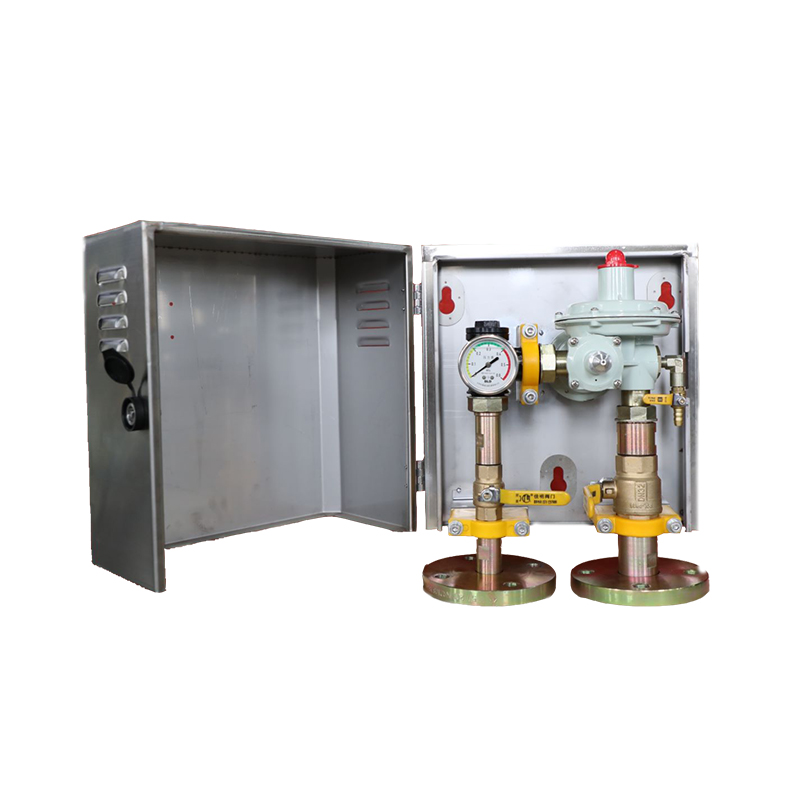
Oct . 20, 2024 12:48
Back to list
صمام تنظيم ضغط الغاز
The Importance of Gas Pressure Regulating Valves
Gas pressure regulating valves play a crucial role in the safe and efficient distribution of gas for a variety of applications, including residential heating, industrial processes, and commercial cooking. These valves are essential in maintaining the desired pressure levels in gas systems, ensuring consistent performance and safety for end-users.
A gas pressure regulating valve functions by controlling the flow of gas through a pipeline, adjusting the output pressure as required. This capability is vital because gas supplied from main sources, such as natural gas lines, often comes at high pressure levels, which may not be suitable for various applications. The regulating valve ensures that the pressure is reduced to usable levels, preventing potential hazards that can arise from excessive pressure, such as explosions or equipment damage.
How Gas Pressure Regulating Valves Work
The operation of a gas pressure regulating valve is based on a simple yet effective mechanism. The valve features a diaphragm or piston that responds to changes in downstream pressure. When the downstream pressure falls below a preset level, the diaphragm moves to open the valve further, allowing more gas to flow into the system. Conversely, if the downstream pressure exceeds the set limit, the diaphragm closes the valve slightly to reduce the gas flow.
These valves are typically adjusted to the required pressure settings during installation, but many modern models come equipped with features that allow for easy recalibration. This adaptability is crucial in dynamic environments where gas demand may fluctuate.
.
Gas pressure regulating valves come in various designs to suit different applications. The two primary types are
صمام تنظيم ضغط الغاز

1. Single-Stage Regulators These are used for applications where the required output pressure is relatively constant. They provide a straightforward solution for maintaining steady pressure, making them suitable for residential use.
2. Two-Stage Regulators These regulators are used in situations where the gas supply pressure can vary significantly. The first stage reduces the high incoming pressure to an intermediate level, and the second stage further reduces it to the desired output pressure. This two-step process enhances the stability of the pressure, making it ideal for industrial applications.
Safety Features
Safety is paramount in gas distribution systems. Most gas pressure regulating valves are designed with safety features to prevent accidents. For instance, many valves include a shut-off mechanism that activates if the pressure exceeds safe thresholds. This feature helps to protect not only the equipment but also the individuals working nearby.
Moreover, regular maintenance of these valves is essential to ensure their proper functioning. Periodic inspections can reveal wear and tear or potential leaks, which are crucial for preventing hazardous situations.
Conclusion
Gas pressure regulating valves are integral components in the management of gas distribution systems. Their ability to maintain safe and consistent pressure levels is vital across various sectors, from homes to industrial facilities. As technology advances, the design and functionality of these valves are evolving, enhancing their reliability and safety features.
For anyone working with gas supply systems, understanding the importance and operation of gas pressure regulating valves is crucial. By ensuring these valves are appropriately installed, calibrated, and maintained, we can contribute to a safer and more efficient gas distribution environment.
Next:
Latest news
-
Safety Valve Spring-Loaded Design Overpressure ProtectionNewsJul.25,2025
-
Precision Voltage Regulator AC5 Accuracy Grade PerformanceNewsJul.25,2025
-
Natural Gas Pressure Regulating Skid Industrial Pipeline ApplicationsNewsJul.25,2025
-
Natural Gas Filter Stainless Steel Mesh Element DesignNewsJul.25,2025
-
Gas Pressure Regulator Valve Direct-Acting Spring-Loaded DesignNewsJul.25,2025
-
Decompression Equipment Multi-Stage Heat Exchange System DesignNewsJul.25,2025

